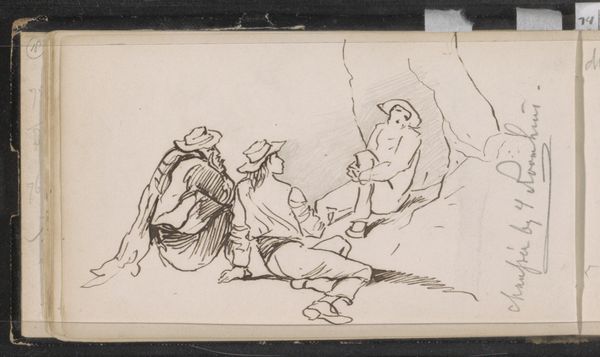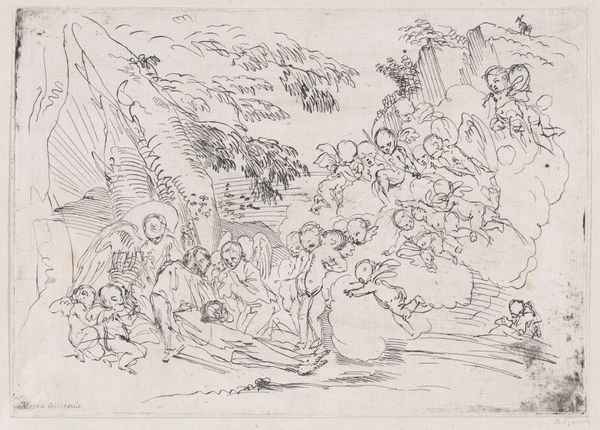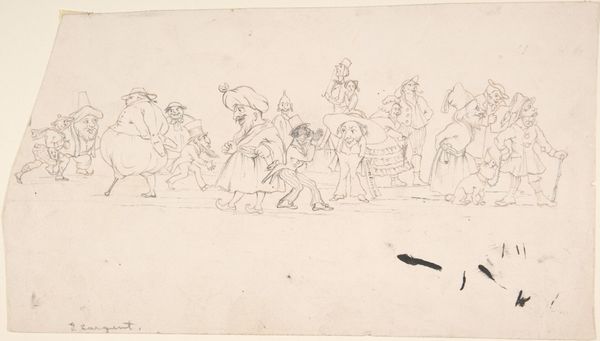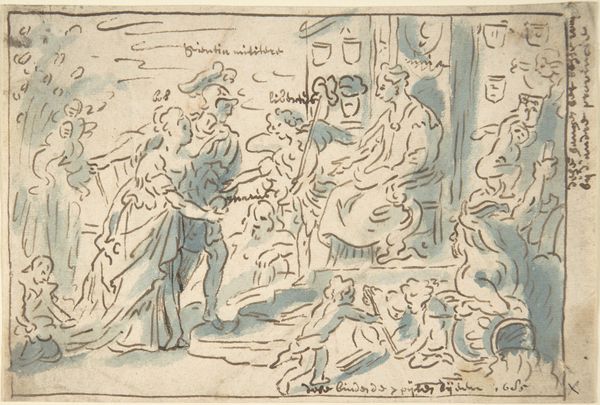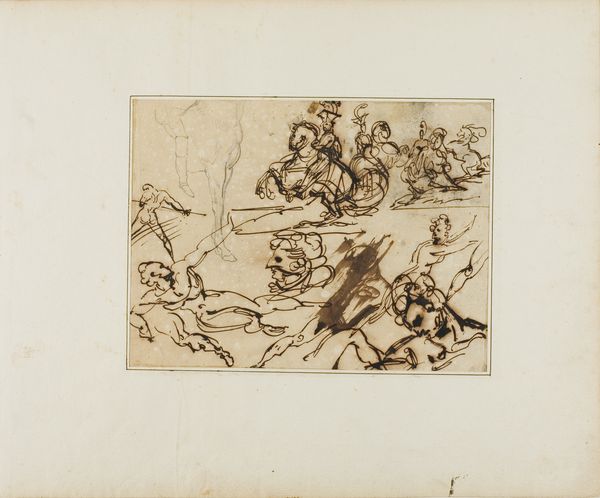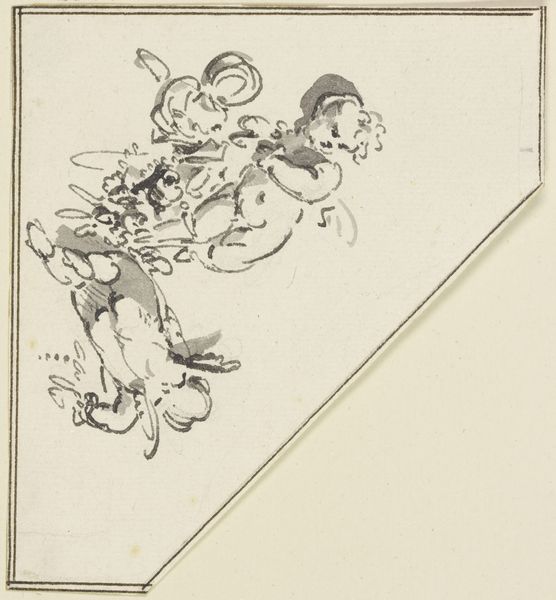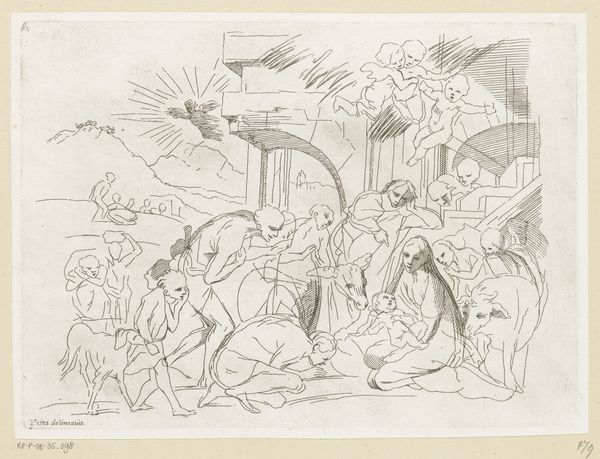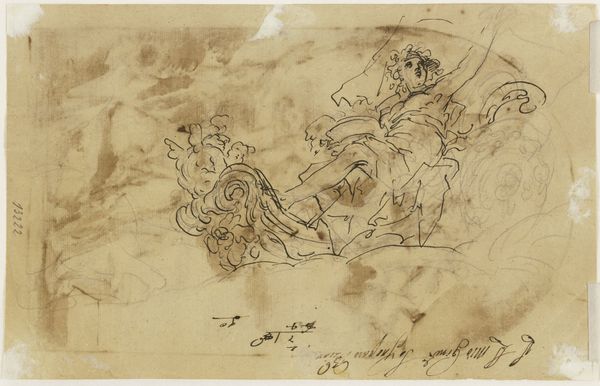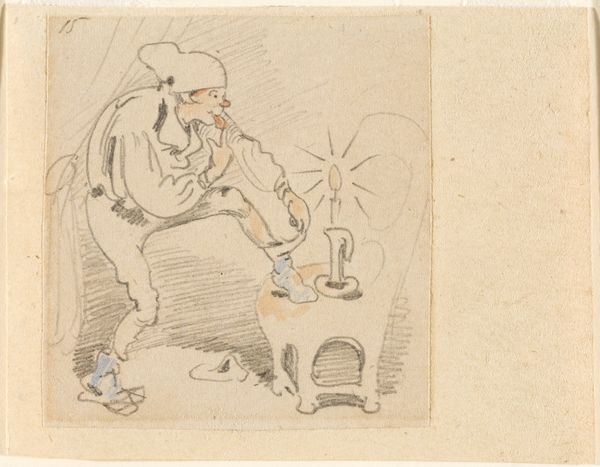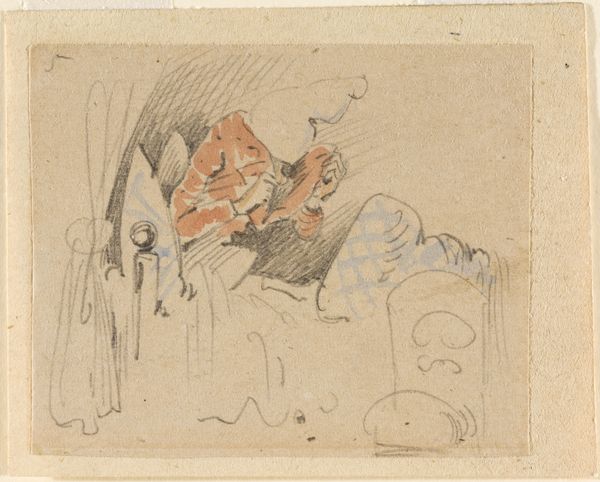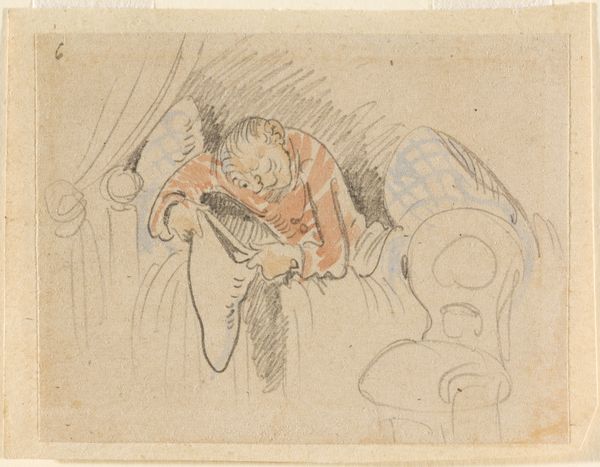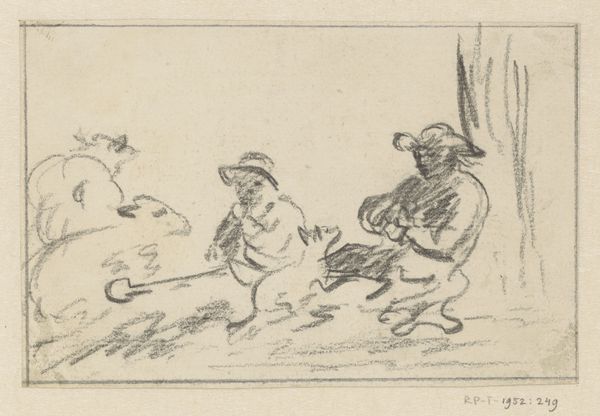
Copyright: Public Domain: Artvee
Editor: So, this is James Ensor's "The Phantom," created in 1889. It's an etching, a quirky little print, and my first impression is that the whole scene feels like a fever dream. The composition is chaotic, with bizarre figures scattered across the plane. What strikes you about it? Curator: The dynamism within the etching is compelling, wouldn’t you agree? Notice the energetic lines, how they define each figure and create a sense of frenetic movement. Ensor employs hatching and cross-hatching techniques in a highly unconventional way. It destabilizes the conventional viewing experience. What about the scale – how do you perceive the balance between the phantom figure and the chaos below? Editor: The phantom looms large on the left, but it's as if the figures below are completely unaware or unbothered by its presence. It definitely messes with my sense of perspective. Is that tension deliberate, do you think? Curator: Undoubtedly. Consider how Ensor subverts the conventional understanding of pictorial space. The figures aren’t necessarily rendered with perspectival accuracy; rather, they exist within their own semiotic frameworks. The phantom’s gaze directs us towards the action, even as the lines refuse to be bound. Tell me, how does the color palette amplify or diminish this disorienting effect? Editor: The colors are quite muted and childlike; that really contrasts with the grotesque imagery and nightmarish mood. It's almost unsettling, as if the scene is being filtered through a naive perspective. Curator: Precisely! This juxtaposition underscores a profound engagement with the language of signs. Ensor's disruptive treatment encourages viewers to decode the network of internal relations in his bizarre figurative system. The crude coloration serves as a semiotic marker. How can such techniques allow Ensor to present us with fresh perspectives? Editor: This was enlightening! I see how Ensor used line and form to create unsettling visual tensions. It's definitely challenged my perspective. Curator: Indeed. And through a keen understanding of visual language, Ensor reveals to us the powerful expressivity inherent in this disturbing vision.
Comments
No comments
Be the first to comment and join the conversation on the ultimate creative platform.
